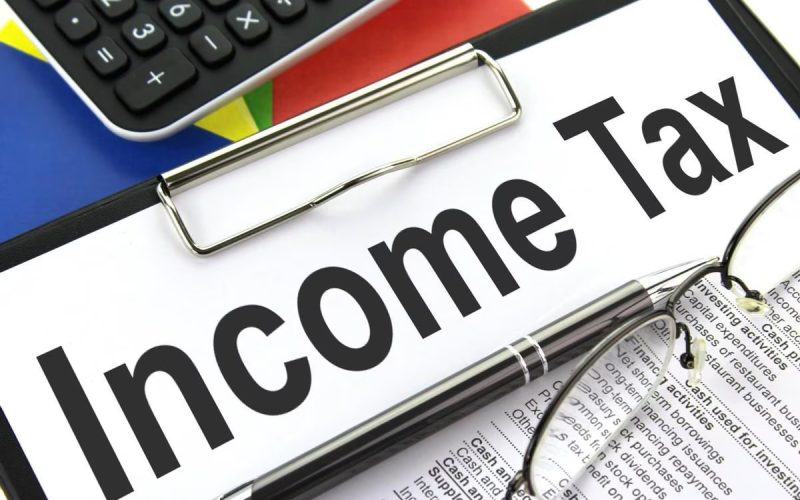Introduction
Financial decisions are rarely straightforward. Between balancing income, managing expenses, and planning investments, one critical factor often overlooked is tax disclosure. Far from being just a compliance requirement, proper tax disclosure provides valuable insights that can shape smarter financial strategies. By understanding what tax disclosures reveal and how to use that information, individuals and businesses alike can reduce risks, improve transparency, and ultimately make stronger financial choices.
What is Tax Disclosure?
At its core, tax disclosure refers to the process of revealing or reporting financial information related to taxes. This can include income statements, deductions, tax liabilities, and credits. Businesses and individuals are often required to disclose tax-related data in financial reports or during tax filings to ensure compliance with legal and regulatory standards.
For businesses, tax disclosures are usually part of financial statements and provide insights into how taxes impact their bottom line. These disclosures may include information on the effective tax rate, tax contingencies, and deferred tax assets or liabilities. For individuals, tax disclosure typically refers to the tax returns and related documents that provide a clear picture of their income and expenses.
Tax disclosure serves two primary purposes: transparency and accountability. By having this information accessible, stakeholders (such as investors, employees, and customers) can assess the financial health and integrity of an entity. In personal finance, individuals can better understand their tax responsibilities, which helps them plan and make more informed decisions.
Why Tax Disclosure Matters Beyond Compliance
Tax disclosure is typically viewed through the lens of legal obligation—something that must be filed and kept up to date to avoid penalties. However, when seen as more than just paperwork, tax disclosure becomes a strategic tool. It highlights not only taxable income and liabilities but also trends in spending, investment allocations, and possible areas of inefficiency.
For businesses, this means uncovering insights that could lead to better capital allocation or identifying deductions that may have previously gone unnoticed. For individuals, tax disclosures can serve as a roadmap for improving savings strategies, planning retirement contributions, or even deciding when and how to diversify investments. In other words, tax disclosure is not merely about meeting regulations. It is about seeing the bigger picture of financial health.
Using Tax Disclosure to Improve Decision-Making
The information in tax disclosures can be used in several ways to support financial decisions:
- Identifying financial trends: Year-over-year comparisons of disclosures can reveal whether income sources are stable, growing, or shrinking.
- Highlighting risks: Disclosures often shed light on financial vulnerabilities, such as excessive debt reliance or overconcentration in a single revenue stream.
- Guiding investments: By showing which deductions or credits have been consistently applied, disclosures may suggest where new investments could be both profitable and tax-efficient.
- Supporting transparency: Especially in corporate settings, comprehensive disclosure builds trust with stakeholders, partners, and potential investors.
When carefully analyzed, tax disclosures become less about what is owed today and more about what can be improved for tomorrow.
Leveraging International Tax Insights
In today’s global economy, financial decisions are rarely limited to one region. Many businesses and individuals manage assets across multiple countries, making tax disclosure even more critical. Properly understanding how foreign tax structures interact with domestic obligations can be the difference between saving money and incurring unexpected liabilities.
For instance, many professionals rely on American tax disclosure UK guidance when navigating transatlantic financial matters. Such insight ensures compliance with both jurisdictions while enabling better planning for cross-border investments and earnings. By viewing disclosures in a global context, financial strategies become more resilient and adaptive.
Tax Disclosure as a Planning Tool
Another underappreciated aspect of tax disclosure is its role in planning for the future. Instead of treating disclosures as backward-looking documents, they can be seen as forward-facing guides.
- Retirement planning: Disclosures show how much income is currently taxable, offering clues about what retirement contributions or tax-sheltered investments would be most beneficial.
- Business expansion: For organizations considering growth, disclosures can reveal whether current cash flow and obligations can support expansion or whether restructuring is needed first.
- Estate planning: Understanding what assets are taxable helps individuals prepare strategies to preserve wealth for future generations.
Simply put, disclosures act like a compass, pointing financial decision-makers toward sustainable strategies.
Best Practices for Using Tax Disclosure to Strengthen Financial Decisions
1. Stay Organized with Tax Documentation
The first step to making the most of tax disclosure is keeping all tax-related documents well-organized. This includes receipts, statements, and returns. For businesses, having organized tax records helps in making quick and informed decisions when necessary. Individuals, too, should keep track of tax documents like W-2s, 1099s, and receipts for deductions.
2. Regularly Review Tax Disclosures
It’s essential to regularly review tax disclosures as part of your financial planning process. For businesses, this may mean regularly reviewing tax statements to identify any discrepancies or areas where tax strategy can be optimized. For individuals, reviewing your annual tax returns can help you spot any opportunities for deductions or credits that you may have missed.
3. Consult a Tax Professional
While tax disclosures can provide essential insights, they can also be complex. Consulting with a tax professional can help you navigate the complexities and ensure you are taking full advantage of tax planning opportunities. This is especially crucial for businesses with more complicated tax needs or individuals with unique tax situations.
4. Use Tax Software for Accuracy
For both businesses and individuals, using tax software can simplify the process of managing tax disclosures. These tools can help ensure accuracy and consistency, reducing the risk of errors that could lead to financial penalties. Tax software can also help track potential deductions and identify opportunities to optimize tax positions.
Strengthening Transparency and Trust
Transparency is increasingly valuable in today’s financial landscape. Investors, regulators, and even customers value businesses that openly share accurate financial details. Proper tax disclosure shows an organization’s willingness to operate with integrity, which can enhance credibility in the marketplace.
On an individual level, having accurate and clear disclosures helps financial advisors provide better guidance. With a full picture of taxable income and liabilities, advisors can suggest tailored strategies that align with both short-term goals and long-term aspirations.
In this sense, understanding UK tax disclosure goes beyond fulfilling obligations; it also builds confidence among those relying on financial data for decision-making. The stronger the trust, the easier it becomes to secure investment, negotiate loans, or make collaborative business moves.
The Key to Smarter Financial Strategies
Ultimately, tax disclosure should not be viewed as an afterthought or a burden. Instead, it should be embraced as a valuable source of knowledge. By using disclosure data effectively, individuals and organizations can:
- Reduce risks by anticipating tax liabilities.
- Enhance financial planning with greater accuracy.
- Build transparency that attracts opportunities.
- Leverage insights for both domestic and international decisions.
Tax disclosures provide clarity in a financial world that is often clouded with uncertainty. They transform raw numbers into actionable strategies.
Final Thought
The path to better financial decisions begins with understanding and properly utilizing tax disclosure. Instead of letting these documents gather dust, they can be turned into powerful tools that guide investments, savings, and future planning.
For those ready to take the next step, seeking expert guidance is key. A trusted professional can interpret disclosures in ways that go beyond surface numbers, unlocking strategies that truly strengthen financial outcomes. When it comes to actionable insights, Harrison Swift offers a resource worth considering for turning tax disclosures into meaningful financial progress.












